Where to get the best Ramen and the not so secret Ozuké ingredient
As you know, ramen is all the rage. It has been for a while now. Ask anyone where to get the best ramen and they will likely have a very passionate response. In fact, finding the best ramen has almost become an urban sport, the winner gaining social status, emphatic pride, and maybe even a few dates.
Unfortunately, when something becomes insanely popular, it can also become insanely expensive. Not all ramen spots are pricey, but there are certainly a lot of pricey options out there. What if you are just as obsessed with ramen as everybody else, but are shackled by your budget?
We are here to tell you that making ramen does not require alchemy—especially with the super power of delicious kimchi. So why not make your own?
Like an embedded reporter, I photographed as a friend made ramen for dinner. I pretended to be experimenting with a new camera as I lined up the ingredients and snapped away. Herein these photos lies the secret to making delicious, easy and inexpensive ramen that doesn’t come in a microwavable cup.
When I walked in the house I noticed two things immediately: An amazing aroma and my growling stomach. The broth had been simmering for some time before my arrival.
This particular cook was rather secretive about his broth, I think because his strategy was to add a little of this, and add a little of that, until the flavor reached its zenith. He did however excitedly use some juice from Ozuke’s Kale & Collards Kim Chi. He poured it right into the broth, right in front of my camera.
As I arranged the ingredients that were set out for the meal to “try out my new camera,” there were hints of what the broth contained. Beside the kimchi you’ll notice Bragg’s Liquid Aminos, Sriracha, natural rice vinegar, white pepper, turmeric, black sesame oil, and even Jamaican Jerk seasoning.
We can also see almost everything else that the ramen will include once it is plated: ramen noodles, ginger root, garlic cloves, shallots, carrots, radishes, a lime, a jalapeno, green opinions, cilantro, and shitake mushrooms. Not pictured: four eggs and one cucumber.
Isn’t there something so dangerously fun about jalapenos?
I confess I didn’t see what role the ginger played in the meal, but I suspect it was used in the amazing broth.
While the broth continued to simmer, our chef of the evening grabbed a knife. He cut up the green onions, the carrots, the radishes, the mushrooms, the cucumber, the jalapeno, the shallots, and pulled the leaves from the cilantro.
After that, there was some cooking to do. Four eggs were cracked and scrambled with black pepper.
After that, there was some cooking to do. Four eggs were cracked and scrambled with black pepper.
After all the prep was done, the stage was set like this. Everything is fresh and simple, the signature of a good, healthy meal.

As our chef for the evening began to plate the food, it was confirmed that he was an artist. He took his time laying each ingredient on each plate at a time so that the patterns matched from plate to plate.
And after everything was arranged just so, he poured in the broth we’d been salivating over, making each dish almost complete. The cherry-on-top to this ramen dish was our Kale & Collards Kim Chi—a grand finale indeed.
Yes, it was delicious.
Now let’s review. Making a delicious ramen meal at home is something all of us can do. There is very little cooking involved, there is ample room for creativity, the ingredients are simple and few, and as long as kimchi is involved, you’re going to love it




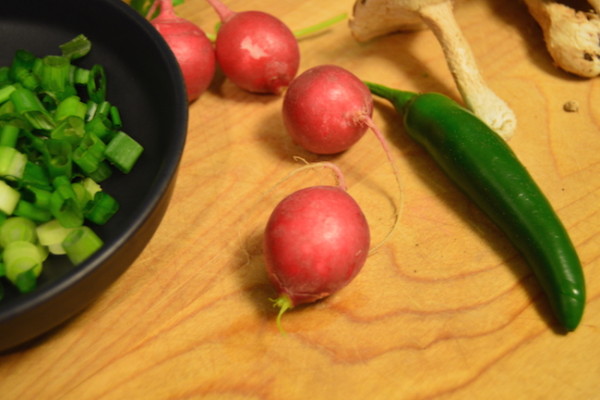
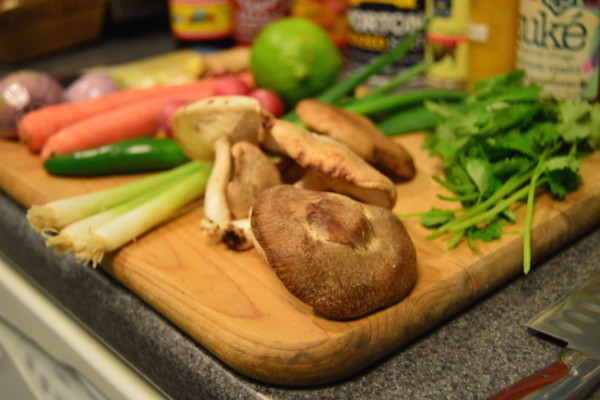
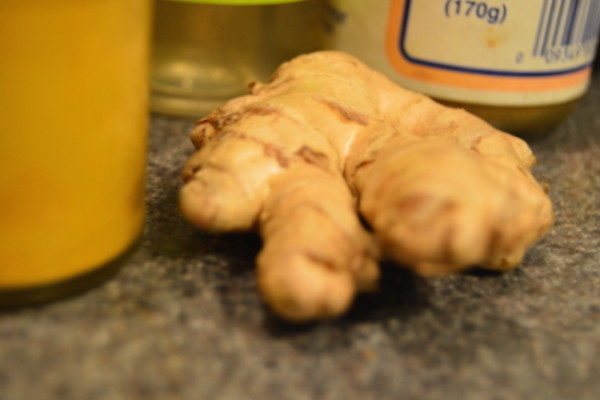





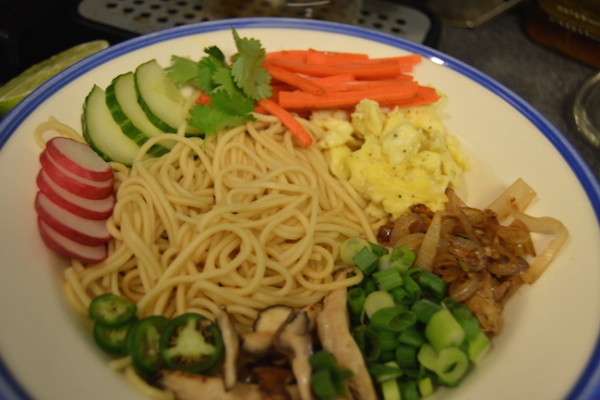











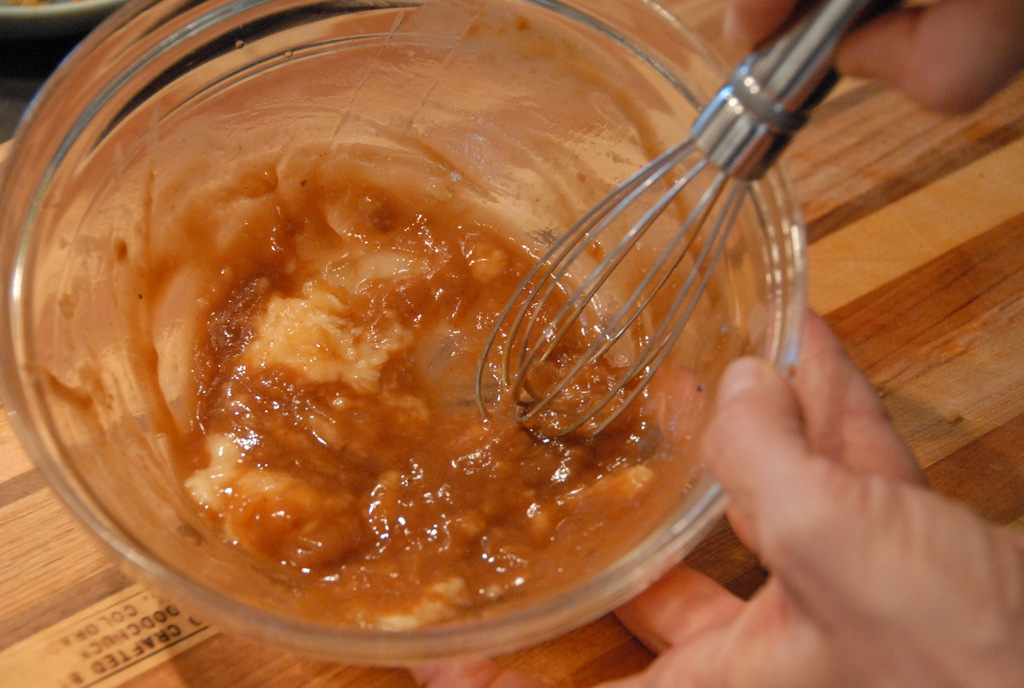
 Noodles next – soak noodles in room temp water for 25 minutes. Drain noodles, and set aside.
Noodles next – soak noodles in room temp water for 25 minutes. Drain noodles, and set aside. 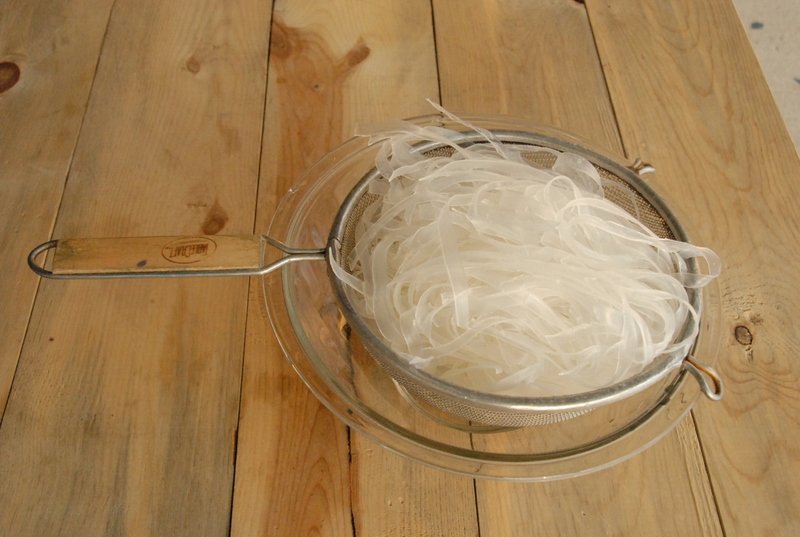
 Instruction #3 – Cook Pad Thai
Instruction #3 – Cook Pad Thai
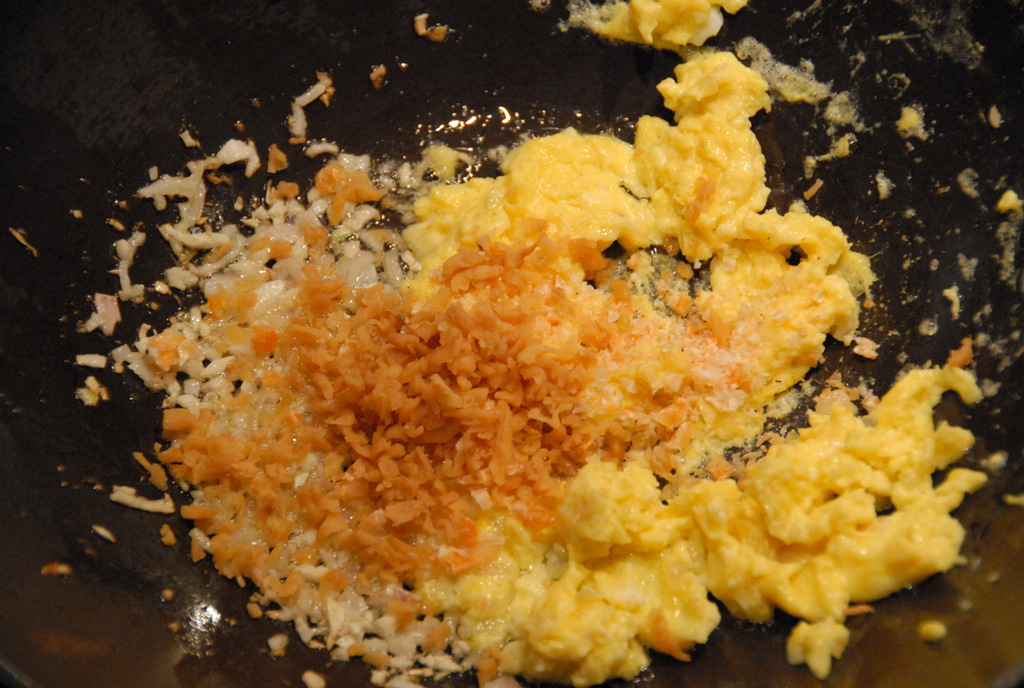

 Continue tossing until noodles are soft, but not mushy. Add water (for cooking) and more sauce (for flavor) as needed. Be sure to add water in small amounts to prevent noodles from getting soggy. Continue tossing. Once noodles are cooked, chewy NOT soggy, add most of the scallions, peanuts, and bean sprouts, reserving some for garnish. Mix well.
Continue tossing until noodles are soft, but not mushy. Add water (for cooking) and more sauce (for flavor) as needed. Be sure to add water in small amounts to prevent noodles from getting soggy. Continue tossing. Once noodles are cooked, chewy NOT soggy, add most of the scallions, peanuts, and bean sprouts, reserving some for garnish. Mix well.  Instruction #4 – Eat
Instruction #4 – Eat